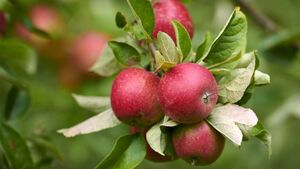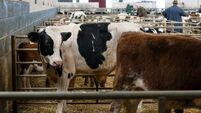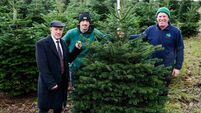Green Fingers: Back to the fruiture

This is a good country in which to grow apples as our mild climate suits these plants.
A few weeks ago I talked about fruit in general terms and how they could be grown in a variety of situations, including small spaces.
As it is the beginning of the season for planting fruiting plants, I thought I would describe some of those that are easy to grow, need little attention and will not need spraying against diseases.
These are plants that grow into a small tree shape if left un-pruned and includes apples, plums, pears, cherries, peaches and nectarines, apricots, figs, mulberries and quinces. I have listed them in order of those that will produce reliable crops and all can be kept to a particular size by pruning, which means that they can be grown in a wide range of sites.
This is a good country in which to grow apples as our mild climate suits these plants. Many of the shop-bought apples that we have acquired a taste for will not do well in Ireland so there is no point in trying to grow them, however tempting this might appear.
Many years ago, ‘Golden Delicious’ was the favourite apple and now it has been superseded by numerous others, which include ‘Pink Lady' and ‘Braeburn’ among others but they are a commercial grower's apple and need constant attention, spraying and better summers than we receive here.
What you have to do is obtain apple varieties with similar tastes that grow well here and they include ‘Discovery’ (8-9), ’Elstar’ (10-1), 'Fiesta’ (10-3), ’Katy’ (9-10), ’Sunset’ (10-12) and ‘Winston’ (12-4), and within this group you can have a long season of use by choosing different eating times as shown with months in brackets (8-10 means August-October). They can be kept to around 2m (6’), which is a useful picking height.
It can take a few years for plums to develop enough to produce fruit but when they do, it can be a huge crop one year followed by a lean one the next. Plum trees tend to want to grow larger than apples but can be kept to around 2.5m (8’) by summer pruning of any branches that have no developing fruits. The range of suitable varieties is smaller but quite adequate and usually one or two is all that anyone can manage to fit into a small garden. These include ‘Czar’ (early 8), ‘Denniston’s Superb’ (late 8), ‘Marjorie’s Seedling’ (late 9), ‘Opal’ (late 7) and ‘Victoria’ (late 8).
If you want to increase your chances of a larger crop then you should try and plant them in an area where they will get shelter and as much sun as possible. Pears trained along wires near a wall will do much better than open trees and the effort is worth it as crops are more regular and heavier.
‘Conference’ (10-11) is the best variety for all round use but the addition of another type will assist pollination so consider ‘Beth’ (9) or ‘Williams’ (9).
The remaining top fruits mentioned above will need a bit more planning to achieve success but they are possible if you give them their needs.
Many trees and shrubs can be pruned back to keep them in shape and not be prone to wind damage which can break during periods of heavy rain and wind during the winter months. Digging and moving plants can be done for another few weeks until the soil becomes too cold.
If you have queries or questions you are welcome to contact me on 051 384273 or orchardstowngardencentre@hotmail.com and if of general interest I will include it in a future article.






